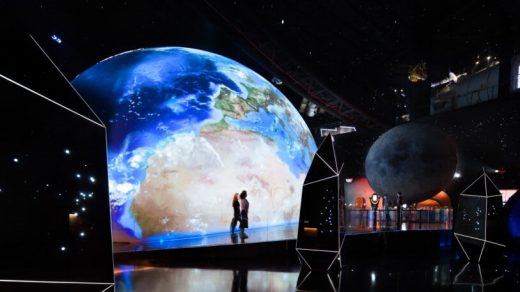Propaganda or architectural masterpiece? A mesmerizing space museum rises in Shanghai
Observing the universe is at the heart of astronomy. For a major new museum, that essential act is literally embedded in the building.
The Shanghai Astronomy Museum, which opened this week, is a massive new building that also functions as a tool for observing the universe. The museum is a 420,000-square-foot cornucopia of space and astronomical science, filling galleries with everything from the history of the creation of the universe to China’s efforts in the space race. But it’s the building itself that offers a large-scale lesson in the workings of the universe and our planet’s place in it.
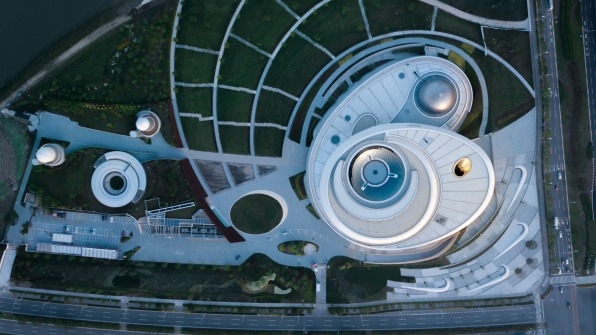
Designed by New York-based Ennead Architects, the museum includes three architectural astronomy tools and observation spaces. One is a sundial-like oculus built into a 130-foot cantilever, creating a moving patch of sunlight on the ground that can be used to track time. A large dome encases a planetarium that is aligned in the building to shine a full circle of light on the ground during the summer solstice. And a large inverted dome on the roof creates a sort of city-blocking outdoor skyspace where visitors can look up to the night sky without seeing any of the surrounding urbanity of Shanghai.
“One of the most compelling pieces that we latched onto was the fact that the universe is in motion, and that motion has great impact,” says Thomas J. Wong, design partner at Ennead who led the project. “It’s the very basis of our concept of time. It’s the very basis of life on the planet. It’s about relationships of entities of various scales, a planet’s moons, the planets around the stars, galaxies in motion around each other.”
The building was designed as a representation of what’s known in astronomy as the three-body problem, or the infinite ways that objects in space affect each other’s gravitational orbits. The museum’s three bodies—the sundial of its oculus, the planetarium in the large sphere, and the skyspace on the inverted dome—are positioned in a swirl, with the museum’s wings forming overlapping ellipses around them, like the paths of orbiting objects in space.
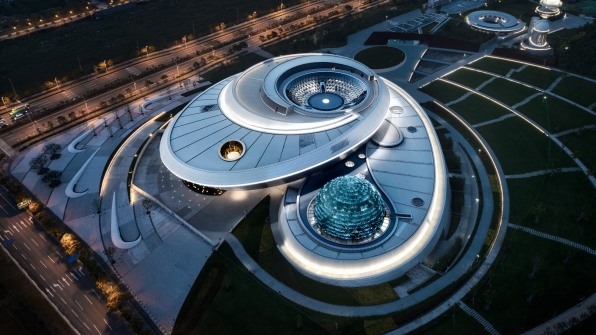
In 2014, Ennead won an international design competition for the museum, which is part of the Shanghai Science and Technology Museum, a publicly administered institution that’s primarily funded through a foundation. Though it’s largely an educational space, the museum also includes galleries dedicated to China’s expanding role in space exploration, including its recent missions to the Moon and Mars. But China’s space ambitions may be about more than increasing our understanding of the universe. The Chinese government has compared space exploration to its contested claims over islands in the South China Sea, leading some to worry that the country’s space program is about off-world imperialism. Some will likely see the museum as a large piece of space propaganda.
For the architects, the museum simply offered a chance to employ some time-tested architectural methods to put the universe in context. Using a building to understand and track the movement of the stars and solar system is an idea that dates back millennia, from Stonehenge to the Great Pyramid of Giza. In more recent centuries, buildings like cathedrals have also served as astronomical devices, with holes in their ceilings and meridian lines in their floors that track the solstices. Modern technologies have since improved solar observations, but the old architectural tricks still work.
“Civilizations of the past used built structures to make sense of the stars, and this building does the same,” says Wong. “It shapes light. It takes the path of the sun through our sky throughout the course of the day, throughout the course of the year, and it articulates that.”
Ultimately, Wong says, the museum is intended to give people a greater sense of connection with the sun, moon, and stars beyond. After moving through the museum’s galleries and curving hallways, the final area visitors pass through is the skyspace of the inverted dome. Inspired partly by artist James Turrell’s sky observation earthwork Roden Crater in Arizona, the viewing area of the inverted dome is about reducing almost all separation between people and the stars.
“We wanted to have people experience the sky in an uninterrupted, direct, almost confrontational way. At the end, it’s you and the sky,” Wong says. “That confrontation is hopefully transformative.”
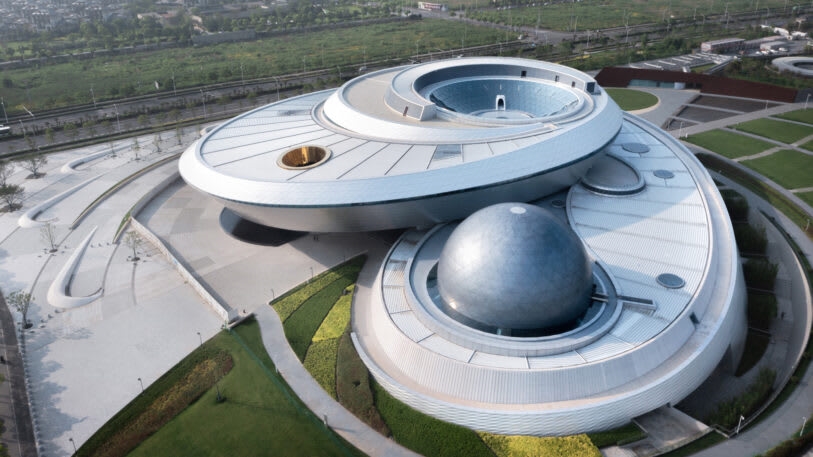
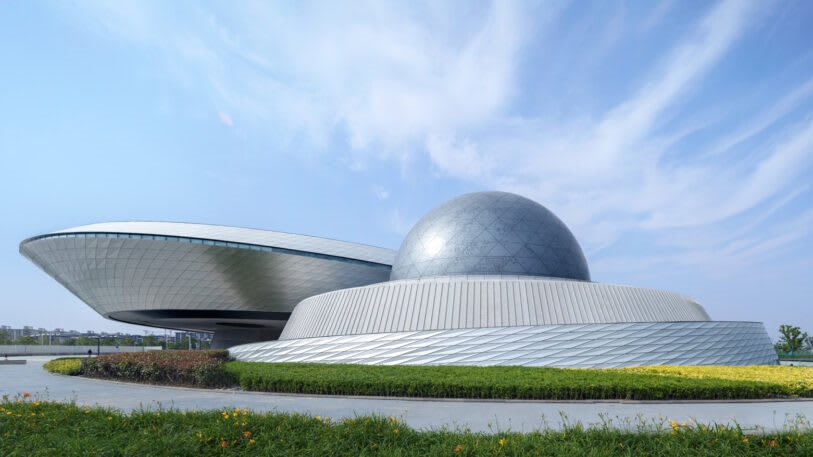
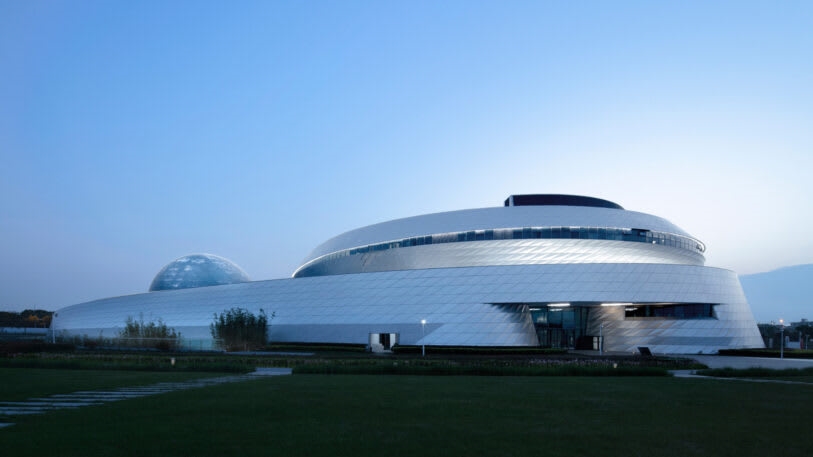
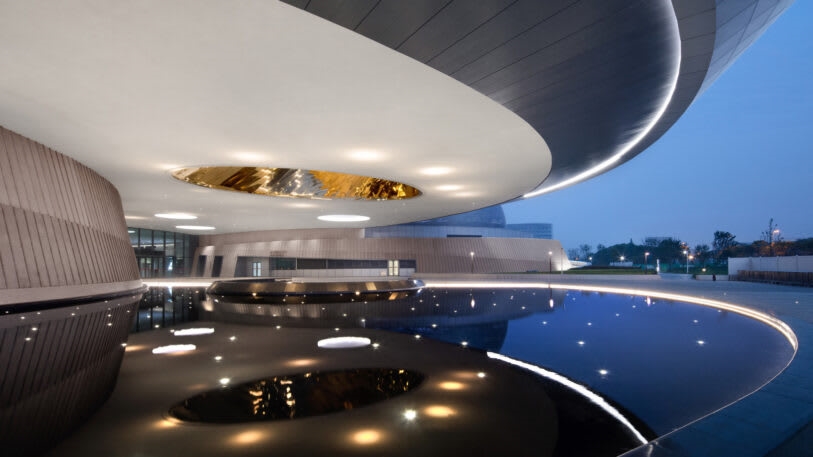
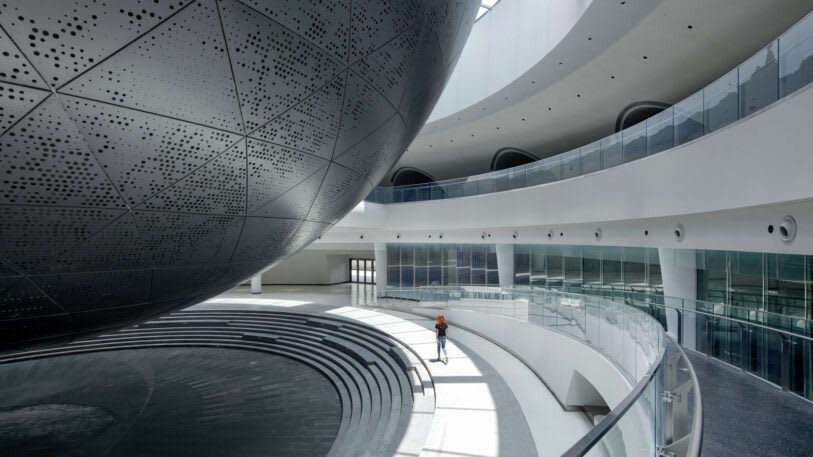
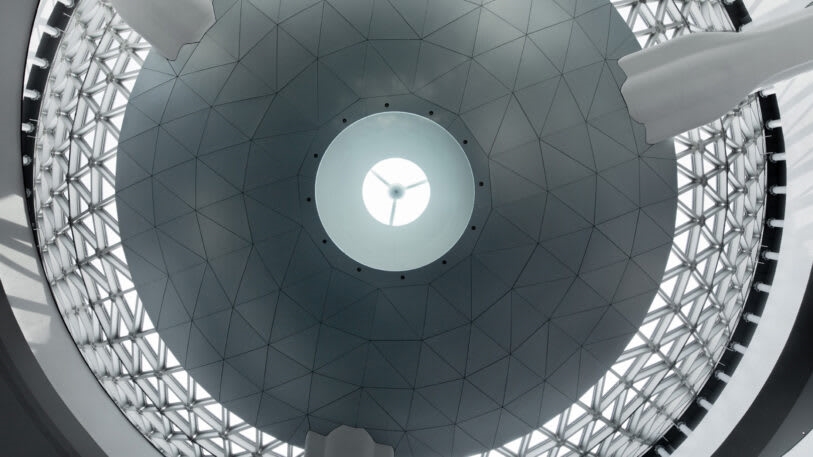
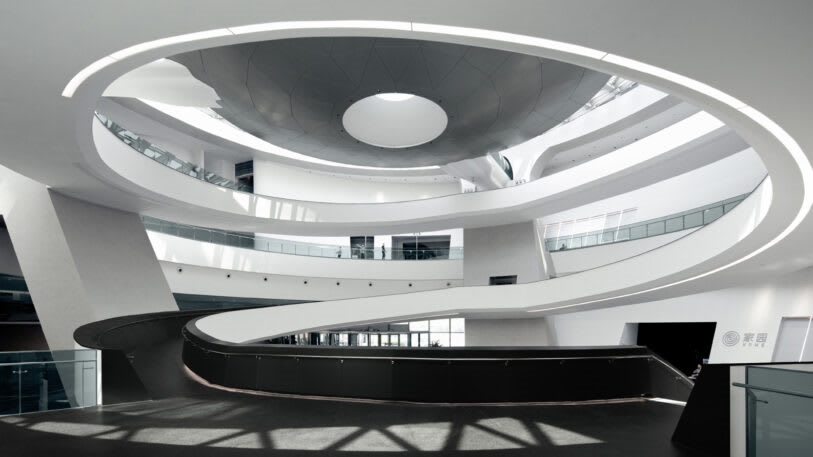
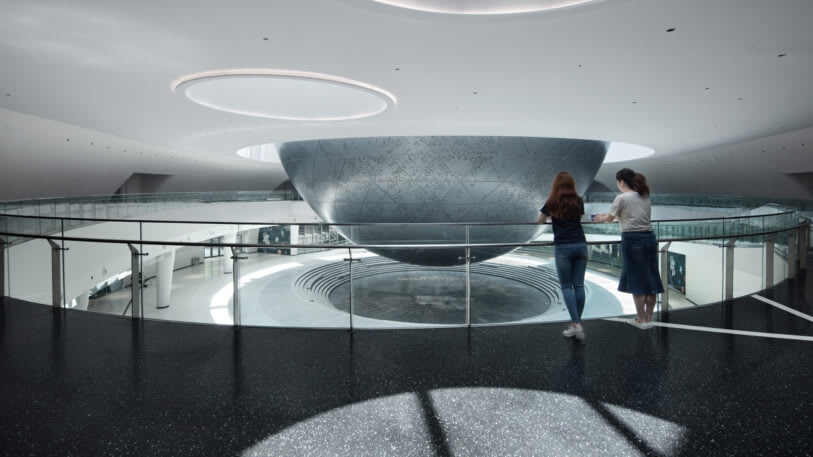
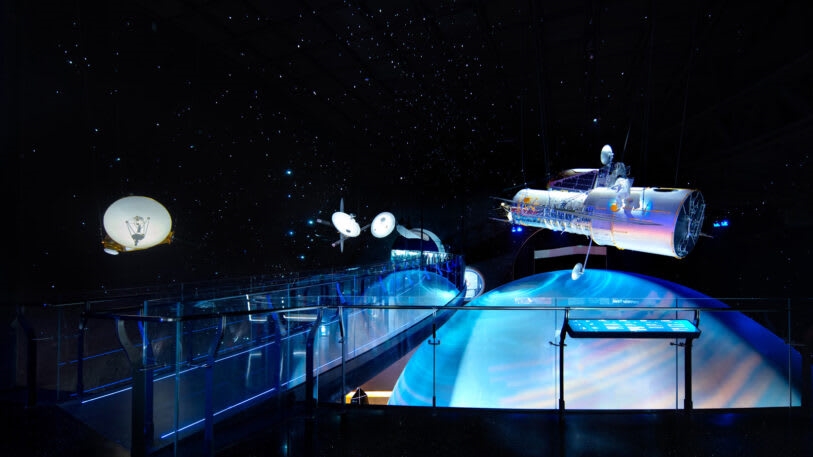
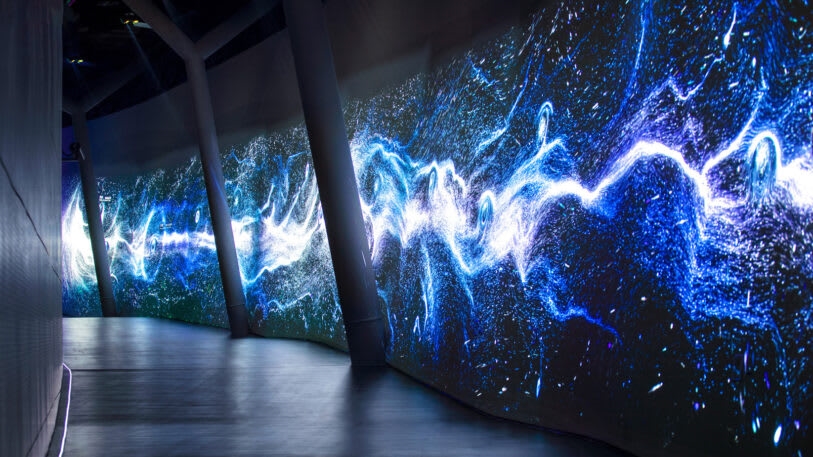
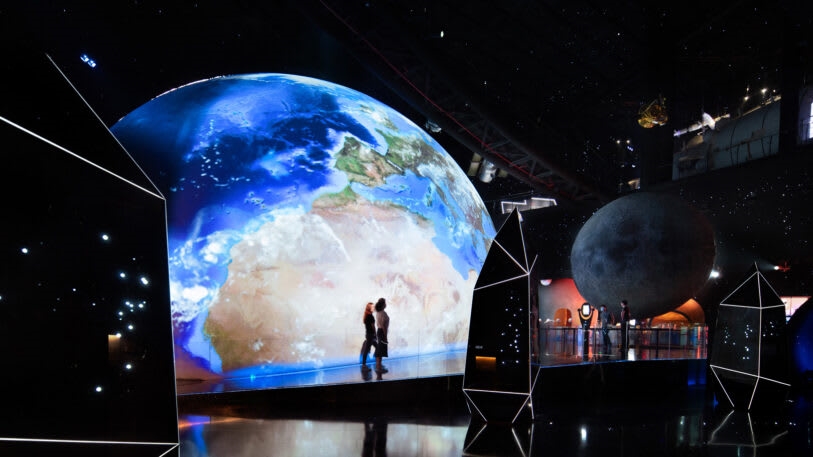
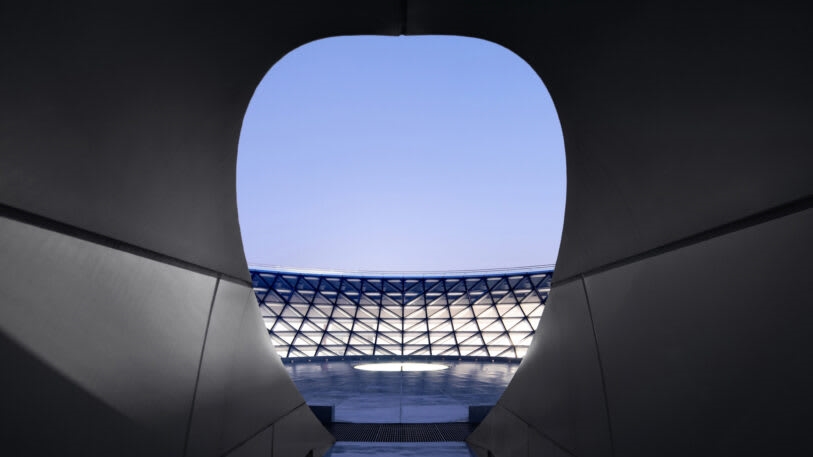
(19)

